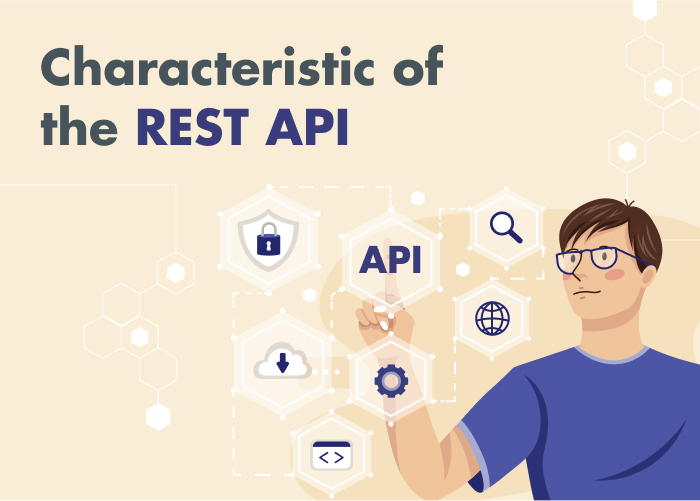Characteristic of the REST API

The characteristics of the REST API that define their architecture and behavior are as follows:
- One of the key principles of REST is that every request a client makes to the server needs to include all the details required for the server to respond to it.
- Furthermore, REST follows a client-server architecture, where the client and server are separate entities that communicate over a stateless protocol, typically HTTP. Better scalability and flexibility are made possible by this separation, since clients and servers may develop separately.
- A standard set of procedures for interacting with resources is defined by the consistent interface of REST APIs. The four primary HTTP methods on this interface are usually POST (create a new resource), DELETE (delete a resource), PUT (change an existing resource), and GET (retrieve a resource). Furthermore, common data formats like JSON or XML are frequently used by RESTful APIs to express resource data.
- The concept of HATEOAS (Hypermedia as the Engine of Application State) proposes that in order to instruct clients on how to engage with the API dynamically, hypermedia links should be included in API responses. Clients can explore the features of the API without previous knowledge by embedding links into responses, which enhances discoverability and decouples client and server implementations.
- Furthermore, cache-control directives are another feature of server replies that let clients or intermediate systems save answers for use in response to subsequent queries. Responses that are cacheable can reduce network traffic and boost the API’s general effectiveness.
Components of REST API
The components of REST API are:
- Resources: The main conceptual entities that the API exposes are called resources. These might be distinct URIs for data items, like people, goods, or articles.
- HTTP Methods: GET, POST, PUT, DELETE, PATCH, OPTIONS.
- Uniform Resource Identifier (URI): They are responsible for addressing and interacting with online resources. URIs frequently adhere to a hierarchical framework.
- HTTP Status Codes: Status codes provide information about the result of an HTTP request.
- Representation: Representations define the format of the data exchanged between the client and server. Common representations include JSON and XML.
- Stateless: APIs are stateless, meaning that each request from a client must contain all the necessary information to be understood by the server. The server does not maintain a client state between requests.
- Hypermedia: Hypermedia allows the server to provide links to related resources along with the response.
- Authentication and Authorization: REST API may implement various authentication and authorization mechanisms to control access to resources. Common methods include API keys, OAuth, and JWT.
- Rate Limiting: Rate limiting is a mechanism used to control the number of requests a client can make to the API within a certain period. It helps prevent abuse and ensures fair usage of API resources.
Conclusion
When creating networked applications, a Representational State Transfer API is a popular architectural approach. Because it is founded on the ideas of statelessness, scalability, and simplicity, it is perfect for developing online services that a variety of customers may access via the internet. RESTful API allows developers to design scalable, adaptable, and interoperable systems that serve a wide range of client applications and platforms by following certain guidelines and constituents.
FAQs
What is a RESTful API?
REST is an API that allows different software applications to communicate with each other over the internet using standard HTTP methods.
What is a rest API vs API?
An API is a set of rules and protocols that allow different software applications to communicate with each other. A RESTful API is a specific type of API that follows the principles of REST, such as using standard HTTP methods and representing resources as URIs.
What is a characteristic of the REST API?
One characteristic of RESTful APIs is statelessness, which means that each request from a client contains all the necessary information for the server to understand and process it.
What is an example of a REST API?
An example of a RESTful API is the Twitter API, which allows developers to access and interact with Twitter’s features and data, such as tweeting, searching for tweets, and fetching user profiles using HTTP requests.
What language are REST APIs written in?
RESTful API can be written in any programming language that supports HTTP, such as Java, Python, Ruby, JavaScript, and C#.
Is Python good for REST API?
Yes, Python is commonly used for building RESTful API.
Ravi Bhojani is the Chief Marketing Officer (CMO) at Alian Software, where he spearheads the company’s marketing strategies and drives its brand presence in the competitive IT services landscape. With over a decade of experience in the technology and marketing sectors, Ravi has consistently demonstrated his ability to blend innovative marketing techniques with deep industry knowledge to deliver outstanding results.